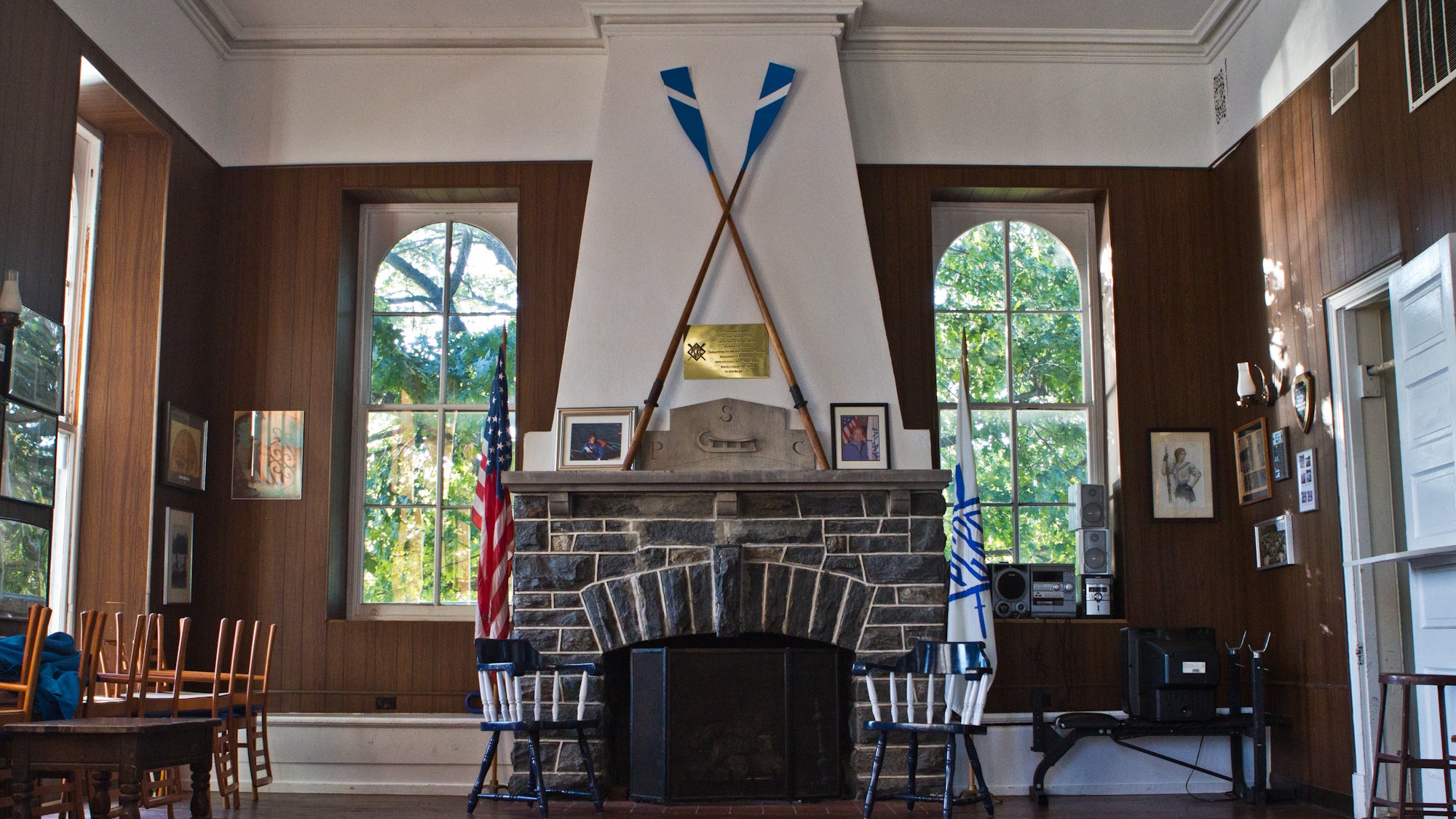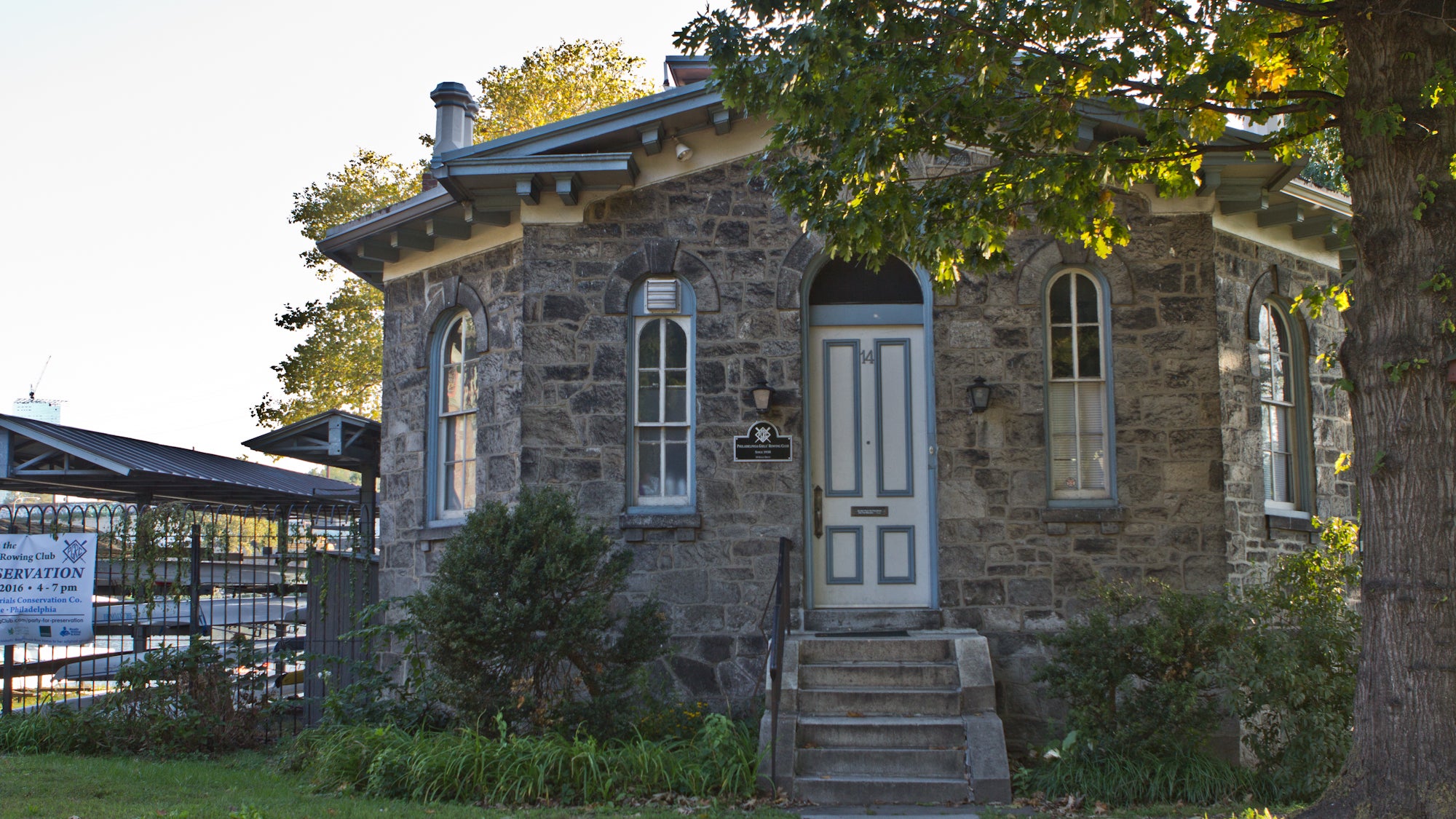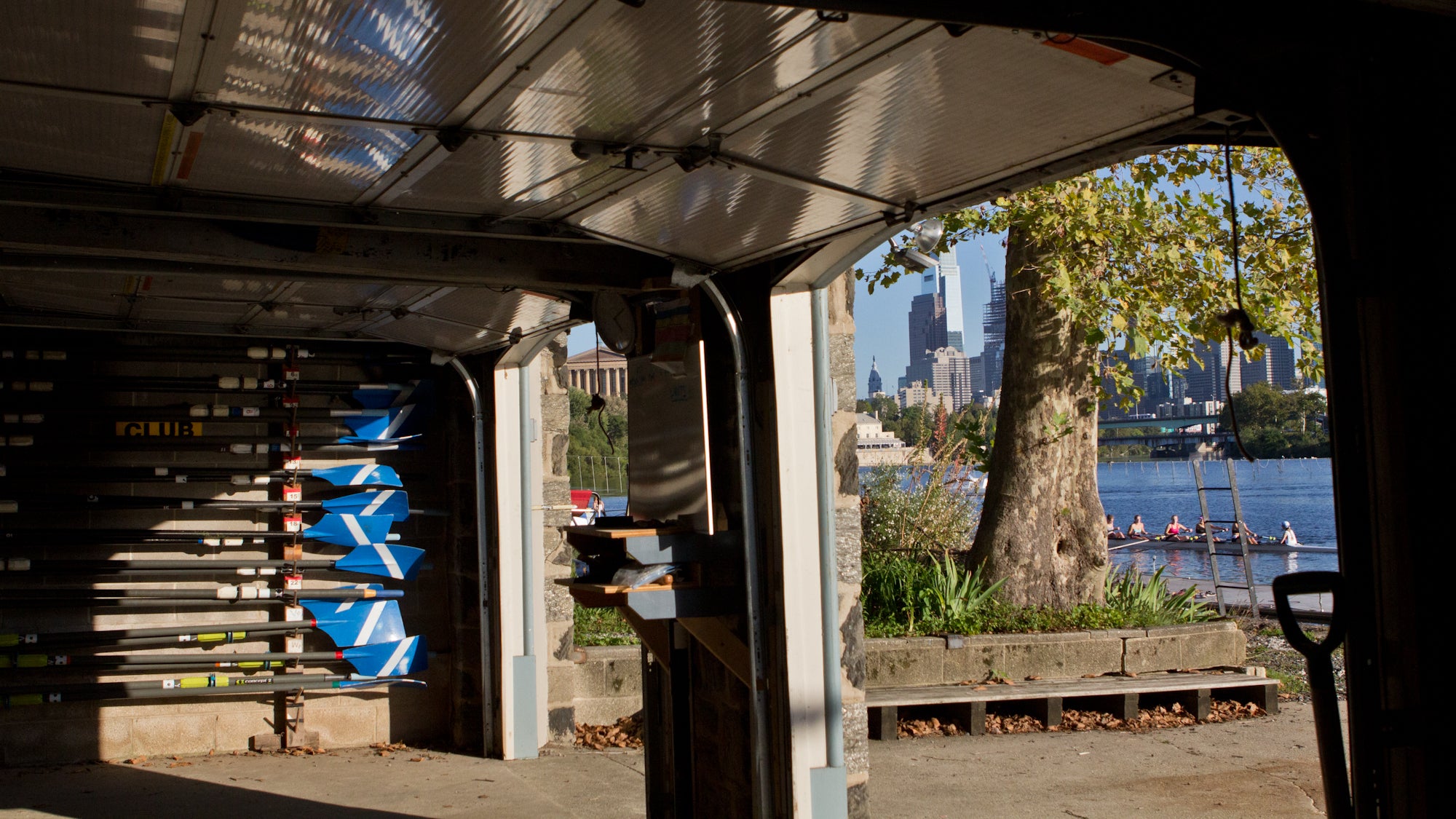Girls’ Rowing Club launches campaign to shore up its historic home
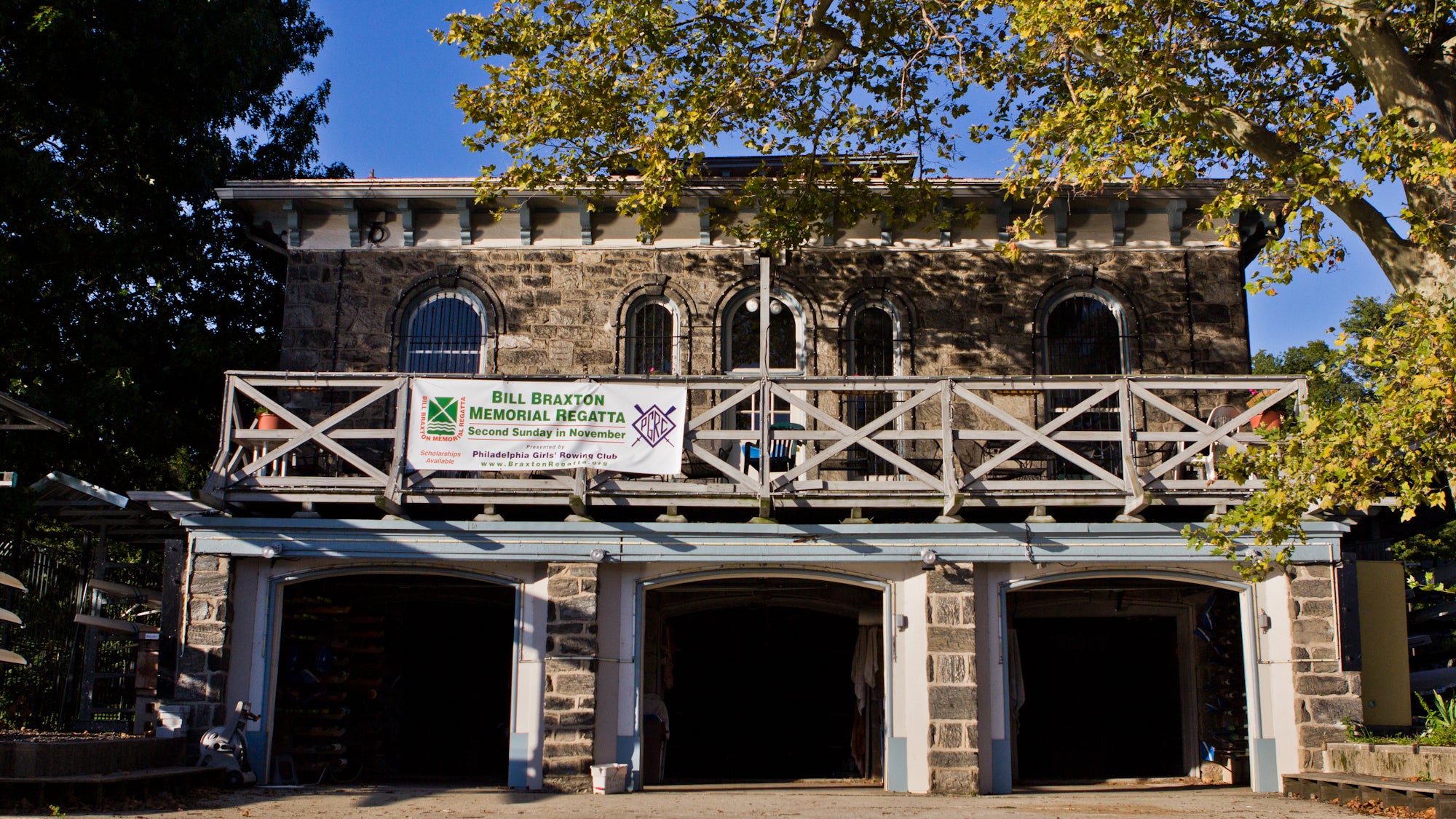
The oldest building along Boathouse Row is in need of preservation work to maintain its beautiful façade and structural integrity. The boathouse at 14 Kelly Drive is more than an historic structure in one of the city’s most scenic places. It is home to the first women’s sculling club in the United States and its members have been at the forefront of the progress for women’s athletics over decades. And this fall the Philadelphia Girls’ Rowing Club has embarked on a fundraising campaign to restore the exterior of its historic clubhouse.
150 years of riverfront recreation
Establishment of the Fairmount Water Works and dam in the early 1800s calmed that section of the Schuylkill and made it suitable for skating in winter and the new sport of rowing in warmer weather.
Skating and rowing organizations were allowed to erect shelters along the riverfront. But they were often wood-frame structures ill suited for harsh conditions along the water. The city condemned the buildings in the late 1850s and passed an ordinance that all future structures be made of stone or brick.
The old buildings were replaced in the subsequent decades with more substantial clubhouses designed by Philadelphia’s leading architects, including Frank Furness, George and William Hewitt, Edward Hazlehurst, and Samuel Huckel, Jr. In 1861, British-born architect and landscape designer James Charles Sidney, who had worked on the master plan for Fairmount Park, built the first permanent masonry structure on the Schuylkill, for the Philadelphia Skating Club and Humane Society.
The clubs were bastions of male bonding and competition. It took many decades before women were allowed to join the clubs or even compete with men.
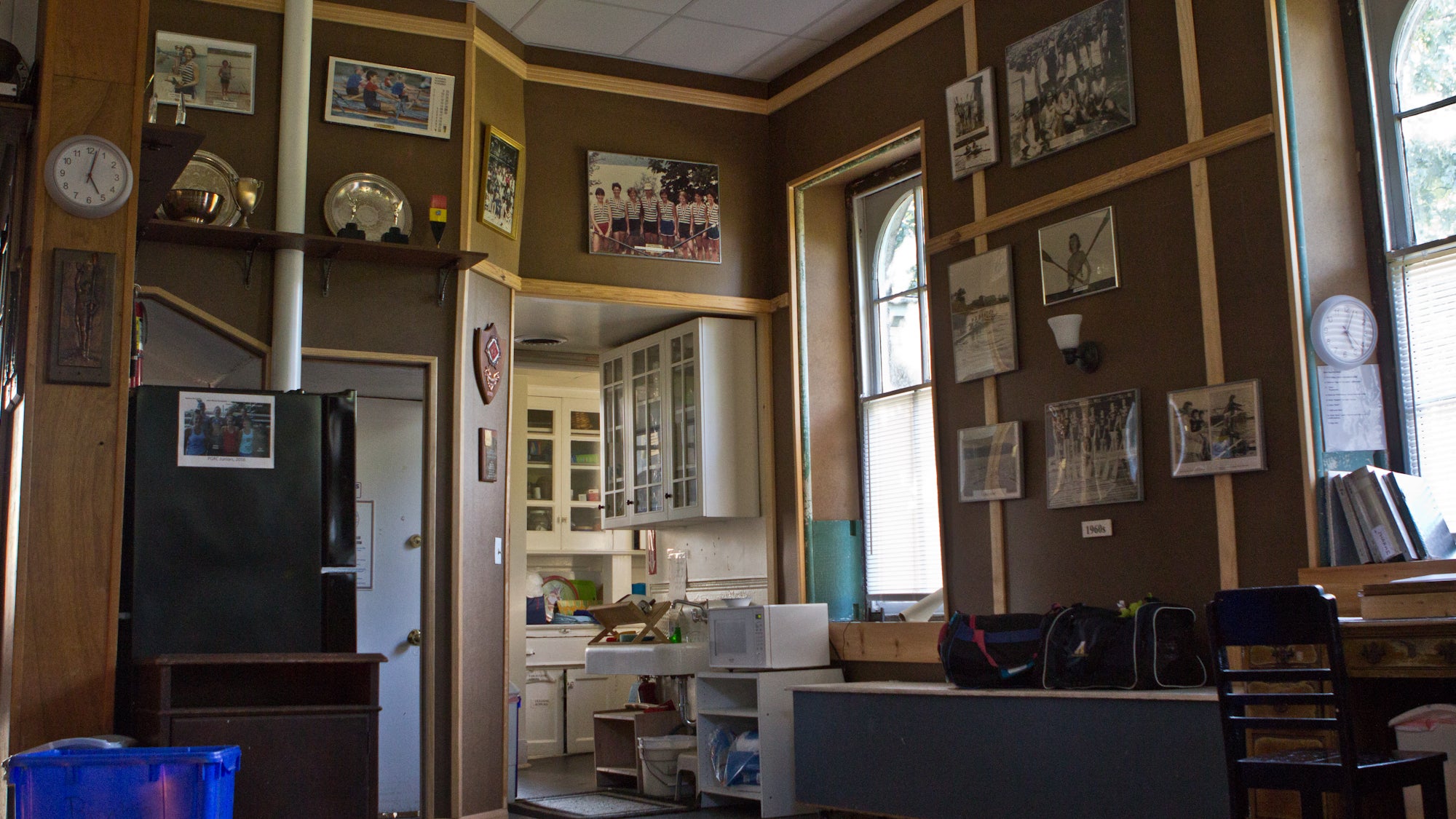
In 1938, the Philadelphia Skating Club, which had built a new facility for its members in Ardmore, began renting its Schuylkill clubhouse to the newly formed Philadelphia Girls’ Rowing Club (PGRC). With 17 members, it was the first and only women’s club in the region.
“We raced against each other in the early years because there were no other women to race against,” explained Dona File, chair of the club’s building committee. In the 1950s, the PGRC began setting up races with other rowing clubs that permitted female members.
In 1966, the Women’s Eight from PGRC won the first National Women’s Rowing Championships in Seattle. They claimed the title again in 1967 in Lake Merritt, Calif. They also competed that year in the European Rowing Championships in Vichy, France, the first time a women’s club had represented the U.S. in a European race.
PGRC was allowed to the join the Schuylkill Navy, the oldest amateur athletic organization in the U.S., in the 1960s. A member of the Girls’ Rowing Club, Elizabeth Griffin Bergen, was named commodore of the Schuylkill Navy in 1981. File was its first female vice commodore. Another current member of the club, Carol Bower, won a gold medal in the 1984 Olympic Games. A leader of the club, Joanne Iverson, was inducted into the NCAA Women’s Hall of Fame for helping to organize the National Women’s Rowing Association.
Trophies, plaques and historic photos line the shelves and walls of the clubhouse, which now has 119 members ranging from women in their twenties to their eighties. “The median age is in the sixties,” said Cindy D’Ambrosio, co-chair of the club’s preservation committee. “Until this year I was skewing younger than the median.”
Teenage students from the Agnes Irwin School also use the facility, and PGRC offers a novice program for any woman who wants to learn the sport.
“We do not teach men. There are eight other clubs for them,” File laughs.
Staying afloat
Since the 1980s PGRC has been coping with structural concerns about its clubhouse. One window is noticeably off level by about 6 inches on the west side, where it’s believed a stream once flowed to the river, though west side has since been stabilized.
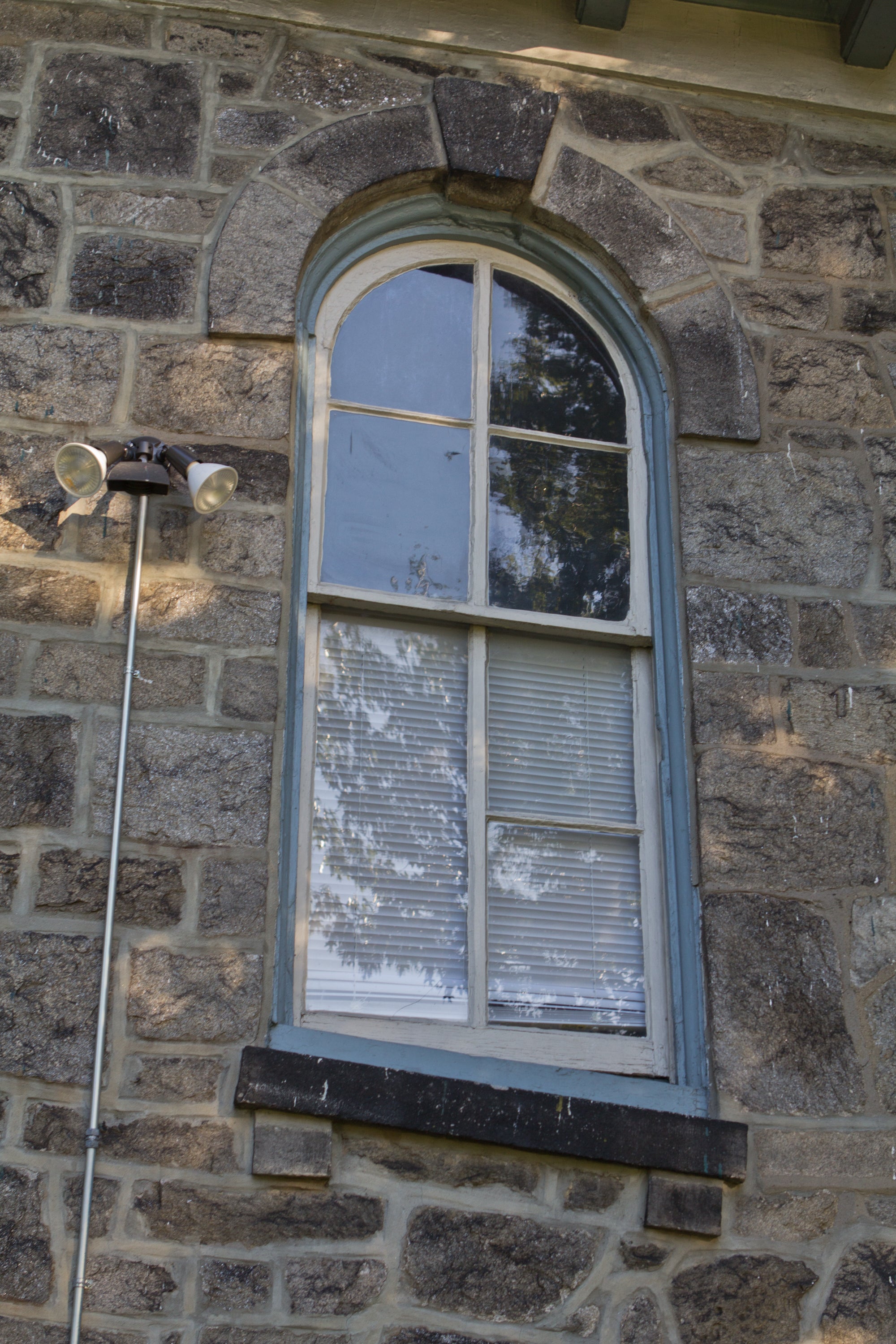
File, a union carpenter and the corporate safety director with the LF Driscoll construction company, said the clubhouse is the lowest on Boathouse Row. When she was first serving as captain in 1999, the boat bays flooded five times. That led to discussion of engineering a floodgate for the building.
Two members of the club who are architects led the push for a comprehensive master plan. The club hired a structural engineer to develop an overall assessment of the building and a fundraising firm did a feasibility study of the potential to raise money within the club.
With the support of members and the board of directors, the club raised the $300,000 needed for the first phase of preserving the building, which involved the structural stabilization of the foundation. A two-foot-thick concrete mat slab was laid to stop the centuries of flooding and erosion that threaten all the buildings along Boathouse Row. That phase was completed at the Girls’ Rowing Club in February 2015.
The next phase will focus on preservation of the building’s masonry. All the original mortar between the local gneiss stones will be removed and replaced with appropriate mortar. “My father always used to say buildings are living, breathing things,” File explained. “Mortar contracts and expands. As rainwater goes in and goes out, the mortar shrinks.” The rock is not very hard so the mortar also needs to be soft, File added, noting repairs have sometimes broken the stone.
In addition to repointing the building, this phase will include cleaning the dark grime left from 19th century industrial smokestacks and 20th century urban traffic accumulated on the clubhouse façade.
PGRC also intends to replace the limestone plaque that once hung above the door but was removed by the Skating Club when it moved out, leaving a temporary fieldstone plaque in its place. A new stone plaque will cost upwards of $10,000, but “we’re looking at it as a naming opportunity,” File said.
The cost of the masonry preservation and cleaning is estimated at $200,000.
On Saturday, Oct. 15, the Philadelphia Girls’ Rowing Club will hold a party at Materials Conservation Co., the firm enlisted to do the rehab, hoping to raise funds to get the preservation project off to a healthy start.
WHYY’s Kimberly Paynter made this video profiling the Philadelphia Girls’ Rowing Club back in 2012, offering a look inside the clubhouse and what this club means for its members.
WHYY is your source for fact-based, in-depth journalism and information. As a nonprofit organization, we rely on financial support from readers like you. Please give today.



